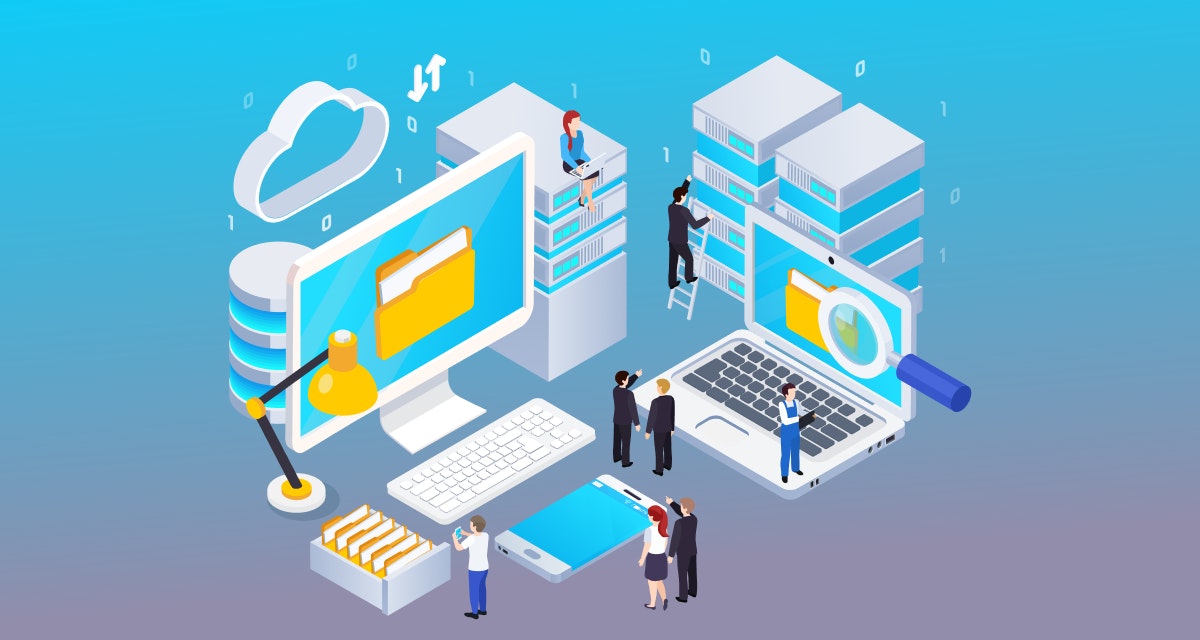Few days back, our sales department received an inquiry. The client was too disappointed as he lost his data from the cloud server where his application was hosted. Our sales team handed over the requirement to the AWS certified professional.
Client: Hey dude! I lost my data from the cloud. My existing cloud service provider is not taking accountability to retrieve the data. If I will not able to get all data back, I will finish.
AWS Certified Professional: Do you know on which cloud server your data was hosted?
Client: Yeah, it’s Amazon Web Services.
AWS Certified Professional: Did your cloud services provider practice disaster recovery for safety and security of your data?
Client: Buddy, I am not so tech savvy. I am not sure what they were doing technically with my application.
AWS Certified Professional: Okey. No worries. Can you please share your cloud server details? So we can check out the status of your data.
(Client shared the details, and Intuz AWS expert promised not to leak his confidential info with anyone or anywhere.)
(after checking the required details) I am really sorry to say you lost your all data. If your cloud service provider followed the DR, then your data would be safe.
Maybe you are one of them who experienced the same. To address this issue, we are going to discuss about the protection before the catastrophe takes place. As we know, precaution is better than cure.
Your IT infrastructure contains everything including web applications, website, enterprise software, hardware devices, business solutions, mobile applications, and most importantly data. Disaster can occur through natural calamities as well as human intervention. Damage to anything from these can generate a negative effect on your bottom line.
Many organizations have gone out of their business as they confronted with the data disaster. However, with the strategized disaster recovery plan, you can avoid such tragedy.
For the high standard IT security, make sure to cover below points while designing your disaster recovery plan.
Pick Right Tools and Techniques for Data Backup
Store your mission critical data at various places to have quick and easy backup of all data. While using AWS cloud platform, you can practice for Recovery Time Objective (RTO) and Recovery Point Objective (RPO).
Recovery Time Objective (RTO)
The time between data loss and it is restored. For example; if a disaster occurs at 2pm and your RTO is 10 hours, the DR process restores the service to acceptable levels by 10pm.
Recovery Point Objective (RPO)
It measures in time an acceptable amount of data loss. For example: if disaster occurs at 4pm and you have set the RPO after every hour, then you can restore the data until 3pm.
Selection of RPO and RTO should reflect the needs of your enterprise. For example; if you have an e-commerce website where the data is frequently changing, you will need a low RPO. However, if your data is relatively stationary, then you can go for more intermittent reinforcement.
Creation of modular application recovery stacks or groups is also essential. All the applications do not carry the equal importance. Define and implement your application stacks and recovery group in a sequence so that critical files and applications can be covered on the priority basis during the data retrieval. Less essential data can be recovered at the end of the DR process.
Look into how AWS services streamline DR process and deployment
Amazon Elastic Cloud Compute (Amazon EC2)
It delivers elastic capacity to in AWS cloud. Use Amazon EC2 to make EC2 instances within minutes and retain complete control during, before and after a disaster recovery event.
Amazon Elastic Block Store (Amazon EBS)
Generate point in time volume data snapshots using the Amazon EBS. For the long term security of your data, snapshots will be saved in Amazon S3. EBS facilitates with off-instance storage that will replicate across multiple servers and persist independently by preventing data loss.
AWS Import/Export
Using the portable storage devices, AWS Import/Export moves data into and out of AWS by accelerating the movement of large-scale data. Using the high-speed network of Amazon, it transfers the data and bypasses the internet directly onto/off of storage devices.
Amazon Direct Connect
Set a dedicated connection from your on-premises data center to the AWS cloud. It will drive cost cutting, improve bandwidth throughput, and deliver a steady network.
Amazon Simple Storage Services (Amazon S3)
The technology is designed for mission-critical and primary data storage. Organizations store objects on multiple devices across several of facilities by delivering 99.999999999% durability. For the stronger protection, AWS offers versioning, Identity and Access Management (IAM), bucket component and Multi-Factor Authentication (MFA).
Amazon Relational Database Services (RDS)
Relational Database can be easily set up, operate, and scale in the AWS cloud. It enables the organization to focus on their core business by leveraging resizable and cost effective capacity while managing time-consuming database. Use Amazon RDS as a replication target for your critical database, delivering cost efficient assurance for the critical data.
Take Backup of Everything
Don’t just focus on data. Take a backup of everything such as infrastructure modules, application settings, and much more. Leverage Amazon services for reliable and easy backup of the entire application.
AWS Storage Gateway
Connect your on-premises applications with AWS cloud storage using AWS Storage Gateway. It facilitates you with seamless and secure integrations. The technology supports gateway virtual tape libraries, gateway stored volumes, and gateway cached volume.
Amazon S3
Transfer your data from and to Amazon S3 using the network. It enables organizations to access the data from any locations. This is a very good platform for storing the primary data.
Amazon Virtual Private Cloud (Amazon VPC)
Set up a separate section of the AWS using the Amazon VPC, establishing VPN connection amongst your data center and your VPC. It will retrieve enterprise applications hosted on your internal network.
Amazon Glacier
One of the cost-effective storage option for data backup. Glacier is as durable as Amazon S3 and optimizes objects for infrequent access.
Check Disaster Response and Data Recovery Frequently
It’s not over once your DR solution is in-line. Organizations have to test them on a frequent basis. AWS facilitates you to test your DR responses as often as you need. Implement AWS CloudFoundation in order to deploy full AWS environment through a template. It describes the parameters, dependencies, and resources needed to create a complete environment.
Testing is essential to get protection against a range of disasters that involve:
- Virus attacks impacting multi sites and affecting core services
- Power cuts to a set of sites and servers
- Losing ISP connectivity to multiple or single site
- User errors result in data loss and needing point-in-time recovery
Monitor Disaster and Set Up Alerts
You must have real-time information about the application issues or server failures. Amazon CloudWatch allows organizations to access custom metrics and pre-provisioned about the AWS resources. Use Amazon Simple Notification Services (SNS) to receive alerts about unusual behavior of the application.
Automate You DR Practices
AWS allows to automate the deployment of application and services. It permits to manage the interruption and changes with ease:
Autoscaling
Autoscaling guarantees your pool of instances will be properly sized to meet the demand. During the DR process, the application will dynamically scale up to meet improved demand. It will also scale back when the usage of the app is down.
AWS CloudFormation
It runs with other tools to automate provision services as per necessity. Use AWS Elastic Beanstalk and OpsWorks to attain greater level of automating instances, abstraction, etc.
Don’t Wait Until Disaster Occurs
It is worst to take steps after your system or application already encountered with vulnerabilities. Implementation of DR plans is not worth once the disaster already happened. You are unable to retrieve your system quickly. It will destroy your business operations as well.
Be ready with your exclusive and custom DR plans to avoid any natural and human generated catastrophe. Get in touch with our AWS certified professionals to explore the inclusive DR strategies and go for the best suitable of you.





